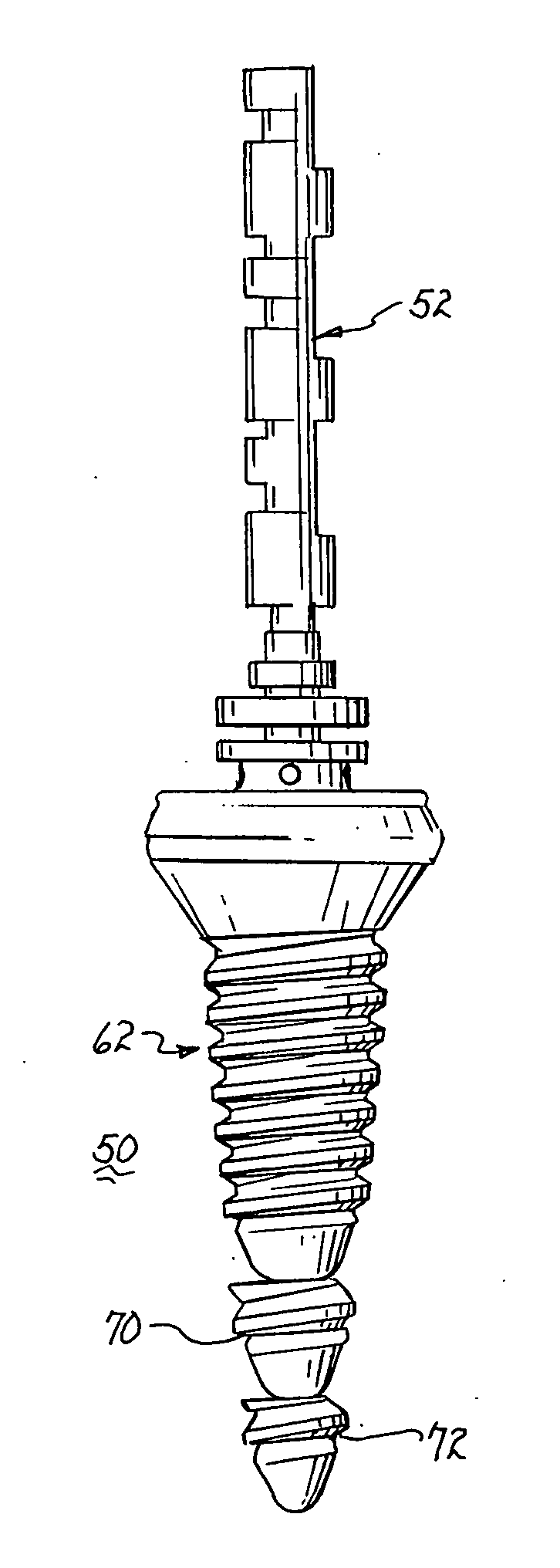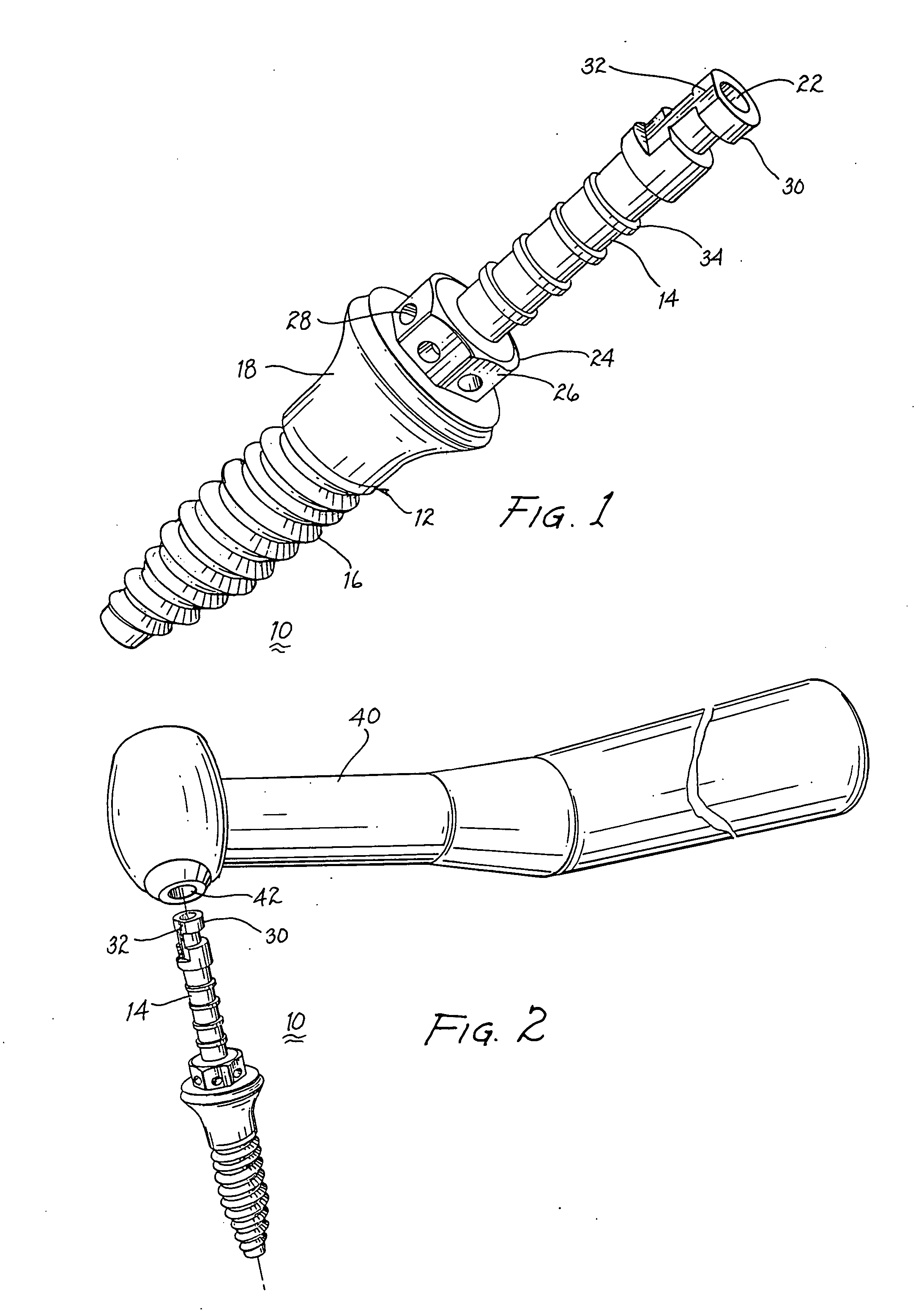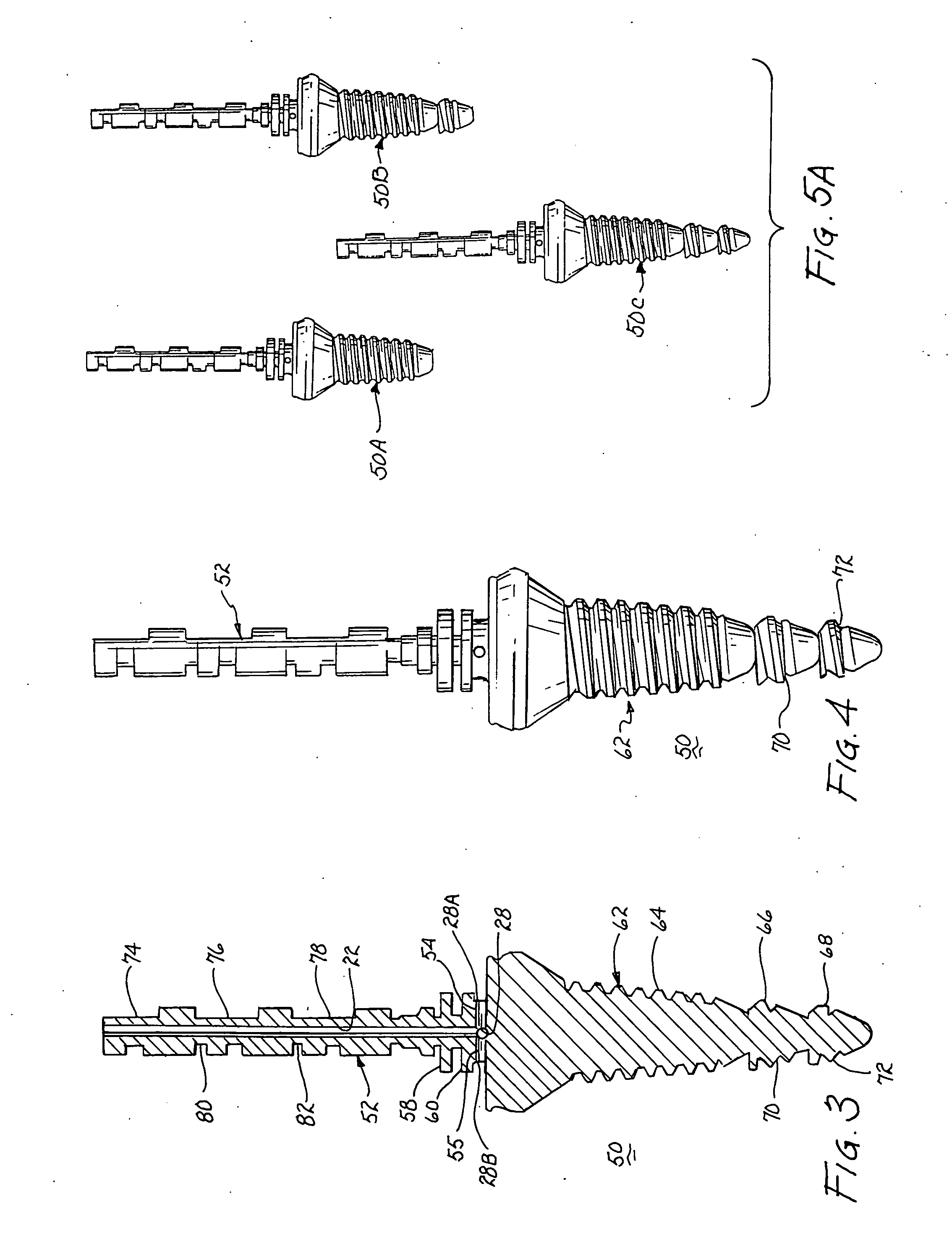The time to evaluate current inventory, to create an order of needed inventory, to actually reorder inventory and to receive and restock new inventory requires significant
staff time and overhead expenses.
The potential for failure always exists even if to a small degree with the best and most elaborate designs.
The ramifications for one connection failure in a full arch restoration involving numerous implants and multiple units of fixed bridgework splinted together can be very disastrous.
That is, one broken screw can render the implant useless and potentially result in the failure of the entire restoration case.
This may require removal of existing restorations and may require reconstruction of an entirely new restoration.
Additionally, if a small screw loosens to the degree that it dislodges from the restoration, the danger of aspiration exists.
A small screw aspirated into the
lung of the patient could be potentially life threatening.
Additional appointments result in
lost time for the patient and additional expense for the dentist as significant fees for such services cannot be charged.
Accordingly, the concern to the patient that the restoration may be defective or that a similar situation may recur at the same site or at a different site in the mouth is a valid issue for the patient.
Even the best systems and designs in the industry have not totally eliminated the possibility of a disconnection issue.
Nevertheless, the constant
threat of an
abutment fixture becoming loosened, rotating or becoming dislodged from the implant during extensive function of the restoration and throughout the life of the restoration still exists.
Presently available implant structures and methodologies still introduces the risk of not being able to complete a restoration in a single appointment due to inventory deficiencies.
Such situation is very disturbing to both the patient and the dentist.
Moreover, there exists a potential for the entire restoration procedure to be stopped and not completed.
Such disruption requires additional appointments,
anesthesia, cleansing of instruments, sterilization procedures, and normal set up and
clean up.
The lack of inventory may even lead to a patient having to be without teeth for a time period necessary to acquire missing stock.
A solution is, of course, that of maintaining a significant inventory but an inventory of such size requires a significant financial investment that is not desired and may not even be feasible.
The potential for misplacement of any of this multitude of parts is always present.
Moreover, removing a part from inventory and inserting it into the mouth only to discover that it is the wrong size or configuration sometimes occurs.
A situation then exists of the possibility of incomplete or inadequate sterilization as well as improper labeling.
The numerous small parts presently required creates the potential for loss or inadvertent discard.
Such discard necessarily increases the costs.
Many manufacturers also void any warranty with respect to any part that is re-sterilized and therefore dictates that such part be thrown away.
This solution is seldom viable as it requires re-sterilizing the part, re-packaging the part, preparing the part to be shipped to the manufacturer for exchange and the need to receive a return
authorization number from the manufacturer.
The clerical time required may not be acceptable due to the attendant costs.
Furthermore, such return and exchange will require a period of time that may not be acceptable and upon
receipt, re-
stocking and entry into inventory will further exacerbate the related clerical expenses.
 Login to View More
Login to View More  Login to View More
Login to View More 


